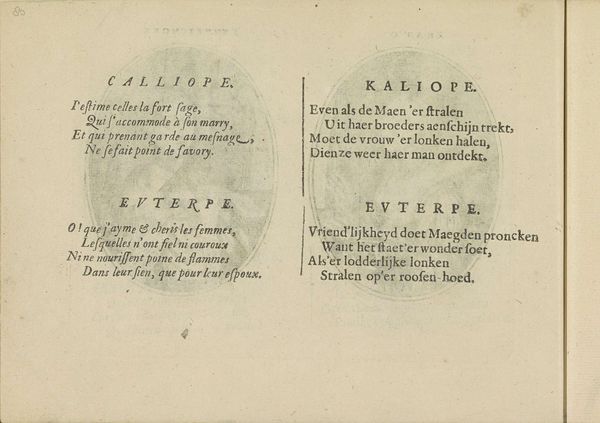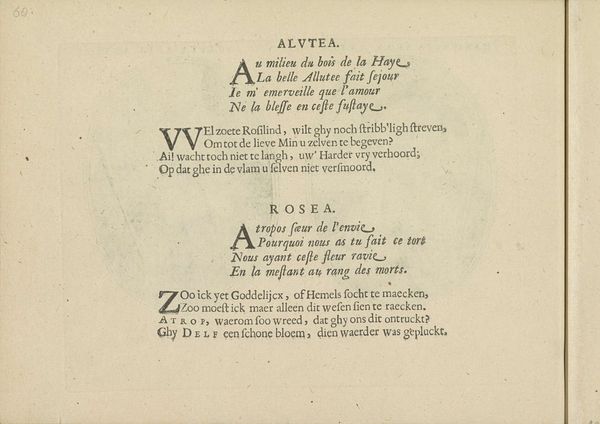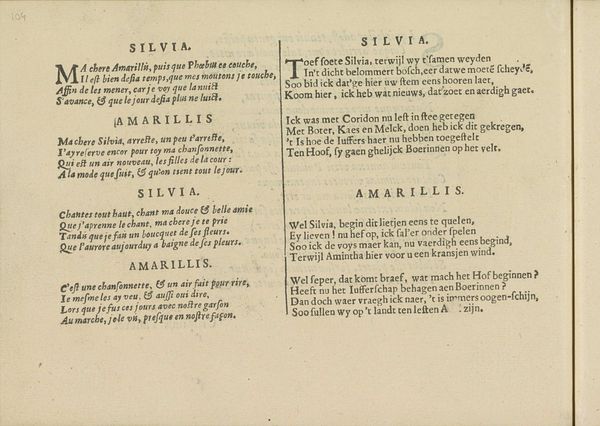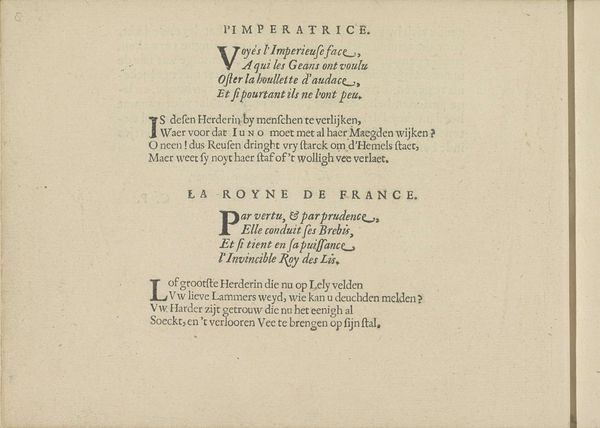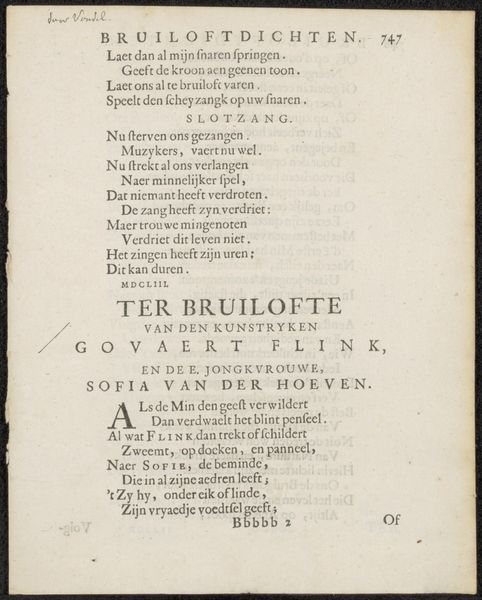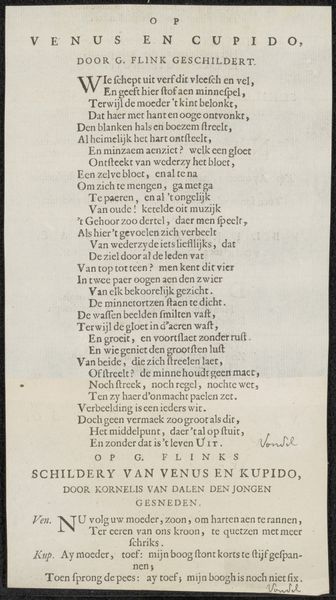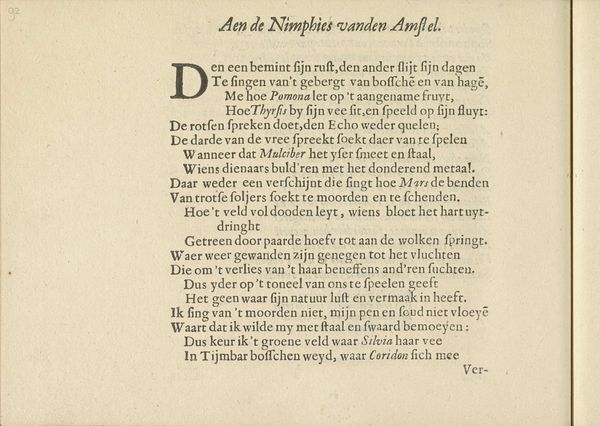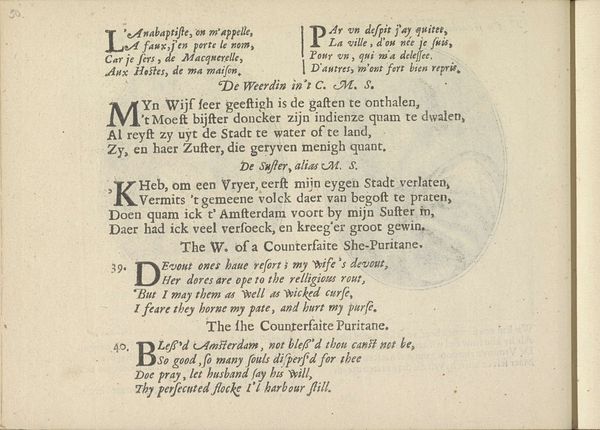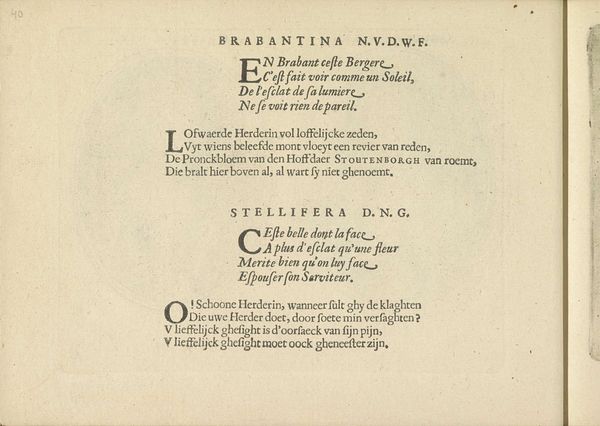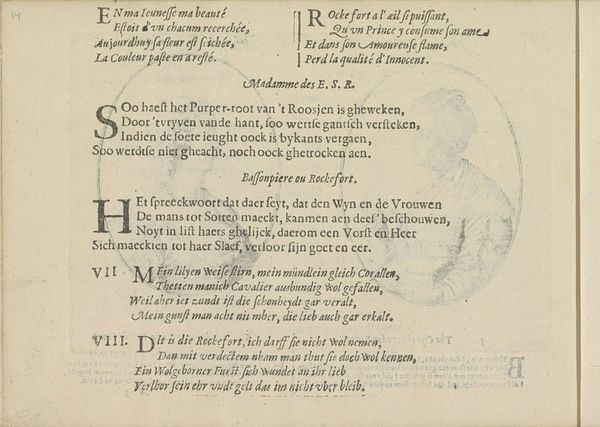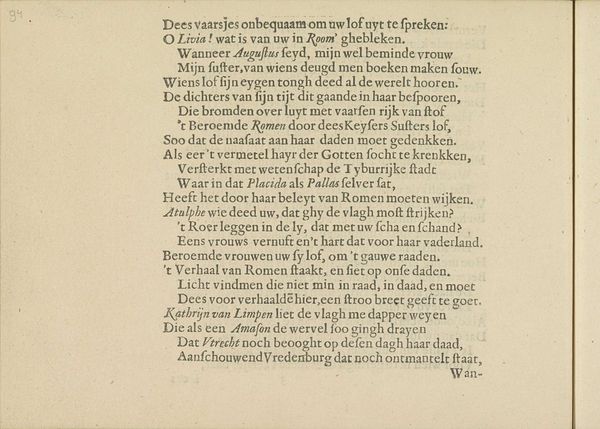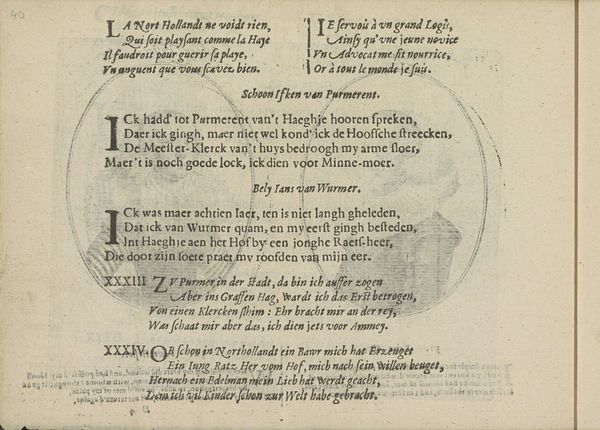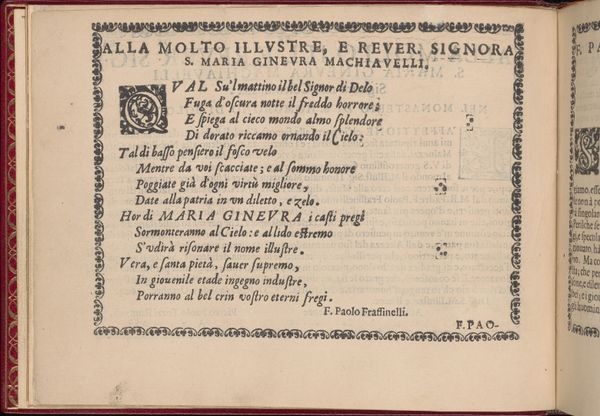
Kwatrijnen bij de voorstellingen van de muzen Erato en Terpsichore 1640
0:00
0:00
graphic-art, print, typography
#
graphic-art
#
baroque
# print
#
typography
Dimensions: height 140 mm, width 190 mm
Copyright: Rijks Museum: Open Domain
This engraving, "Kwatrijnen bij de voorstellingen van de muzen Erato en Terpsichore," was created by Crispijn van de Passe the Younger, around the first half of the 17th century. During the Dutch Golden Age, the intersection of art and intellectual life flourished. The artist captures this atmosphere by depicting verses dedicated to the muses of love poetry and dance. The pairing of both French and Dutch languages reflects the cultural fluidity of the period, and makes me think about who had access to such artwork. What does it mean to have poems dedicated to the muses written in both vernacular and the language of diplomacy? While seemingly celebratory of the arts, these verses subtly engage with the era's social mores. The poem about Erato touches upon the dynamics of marriage and honor, hinting at the complex negotiations of status and personal expression within marital bonds. Similarly, Terpsichore's verse explores the balance between inner life and outward appearance, reflecting the period's concerns with modesty and decorum. The choice to represent the muses through language, rather than visually, invites the viewer into a world where words shape not only artistic expression, but also social values.
Comments
No comments
Be the first to comment and join the conversation on the ultimate creative platform.
